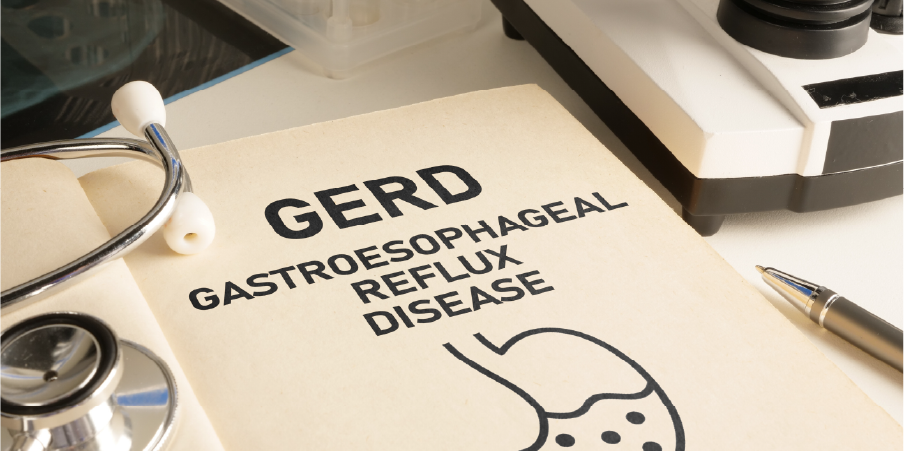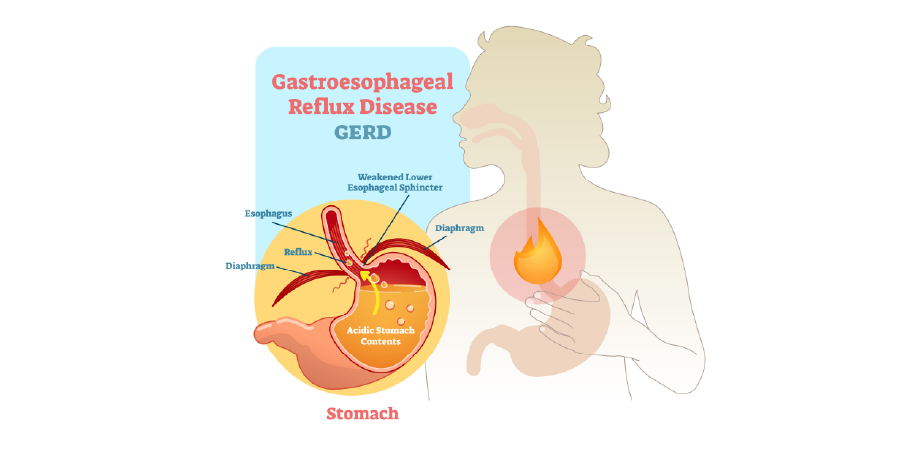Content:
Introduction
Content on this page:
Introduction
Epidemiology
Pathophysiology
Risk Factors
Content on this page:
Introduction
Epidemiology
Pathophysiology
Risk Factors
Introduction
 Gastroesophageal Reflux Disease_Disease Background 1
Gastroesophageal Reflux Disease_Disease Background 1Gastroesophageal reflux disease (GERD) is a condition that results from the recurrent backflow of gastric contents into the esophagus and adjacent structures, causing troublesome symptoms and/or tissue injury. The symptoms become “troublesome” when they adversely affect a patient’s well-being (eg moderate to severe symptoms occurring on ≥1 day/week).
Epidemiology
The prevalence of gastroesophageal reflux disease is reported higher in the Western countries compared to Eastern countries: 18.1-27.8% in North America; 11.6-23% in Australia; 8.8-25.9% in Europe; 2.5-7.8% in East Asia; and 8.7-33.1% in the Middle East. Gastroesophageal reflux disease is more prevalent in males and with older age groups. The higher prevalence may be due to increased life expectancy worldwide.
Pathophysiology
 Gastroesophageal Reflux Disease_Disease Background 2
Gastroesophageal Reflux Disease_Disease Background 2Gastroesophageal reflux disease is produced by various mechanisms such as frequent occurrence of transient relaxation of the lower esophageal sphincter (LES), or pressure abnormalities in the lower esophageal sphincter (which can be caused by hormonal and neural mediators, food, drugs and patient lifestyle). Other factors in the pathology of gastroesophageal reflux disease include poor esophageal clearance, delayed gastric emptying time, and hiatal hernia.
Risk Factors
 Gastroesophageal Reflux Disease_Disease Background 3
Gastroesophageal Reflux Disease_Disease Background 3The risk factors in the development of gastroesophageal reflux disease are age and male sex, which is associated with a higher incidence of esophagitis and obesity, which has 2.5x more likely to have gastroesophageal reflux disease than those with a normal body mass index (BMI). Being overweight and obese contributes to the increasing prevalence of gastroesophageal reflux disease in the Asia-Pacific region. In an Asian study, a BMI of >25 was a significant risk factor for gastroesophageal reflux disease. Alcohol and smoking are also risk factors for gastroesophageal reflux disease. Hiatus hernia, which is the presence and size of a hiatal hernia and is associated with a more incompetent lower esophageal sphincter, defective peristalsis, increased acid exposure, and more severe mucosal damage, is also a risk factor.
